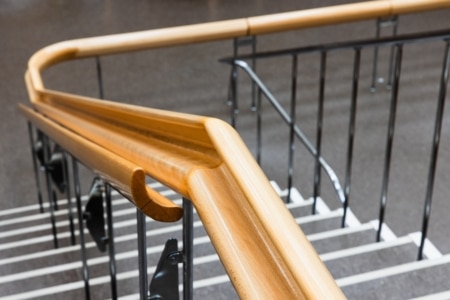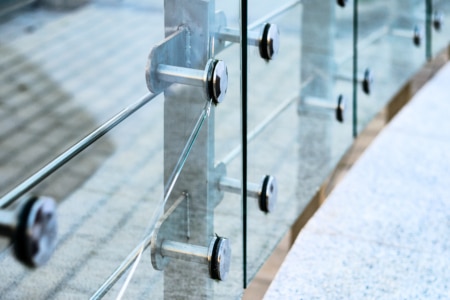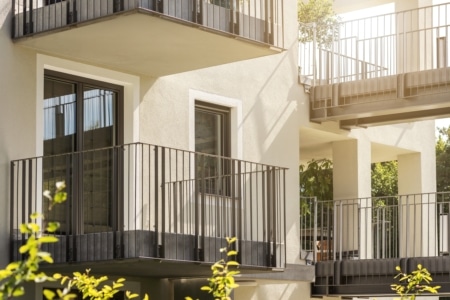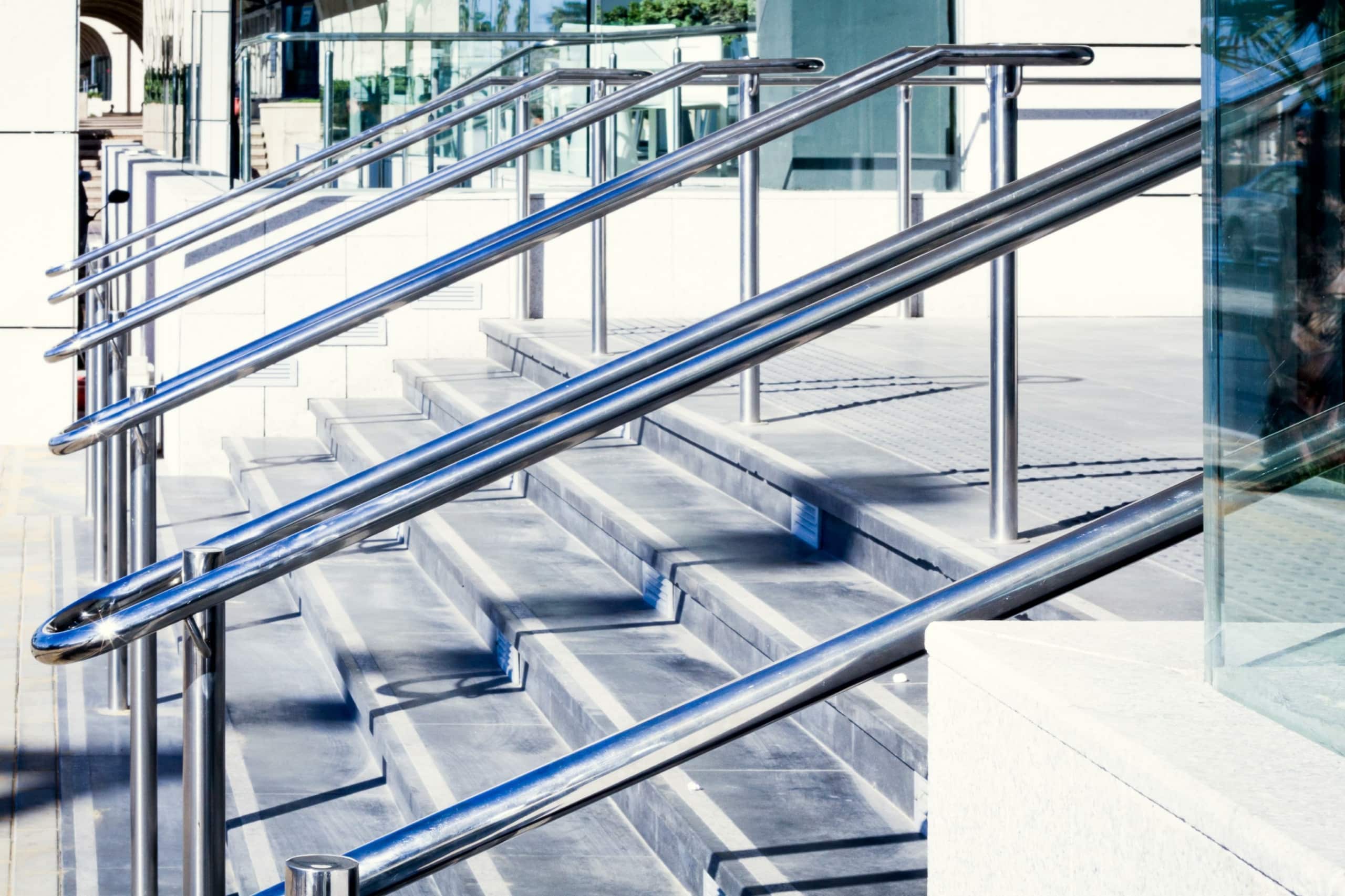Choosing the right handrail material is important, not only for its aesthetic design but also for its stability and safety. As handrails come in a variety of different options, it can be difficult to know which one best fits your requirements.
If you’re wondering which handrail material to choose, look no further! In this article, we will detail what the best railing materials are, as well as the pros and cons of each.
A staircase's handrail is a support system placed at arm level, running parallel to the stairs. It allows individuals to hold onto it while ascending or descending the stairs. The handrail can either be fixed to the wall or connected to spindles on the balustrade, but it must span the entire length of the staircase.
Different handrail materials are appropriate in different settings. But which type is right for you? Let’s explore the various types.
What is the Best Type of Handrail?
When it comes to handrails, there is a wide range of materials to choose from. The type you select will depend on the intended application and desired finish you are hoping to achieve.
In this section, we will explore the various handrail materials and evaluate their advantages and disadvantages. This should help you determine the most suitable option for your specific needs. While there are other alternatives like wire mesh, we will focus on the materials that we consider to be the most superior.
Wooden Handrails
When it comes to site surveys for staircase and balustrade installation, there are a few key factors that you need to take into account.
Prior to anything else, you must confirm that the space has been accurately measured. This means taking into account the room's dimensions and any obstacles that might be in the way. If you have any questions about how to take accurate measurements, you can always consult with a professional site surveyor.
The kind of stairway or balustrade you want to install is a crucial consideration. There are numerous choices, so it's crucial to pick the one that best suits your requirements. When making your decision, you will need to consider the amount of space you have available, as well as the aesthetic of the staircase or balustrade. Once you have considered all of these factors, you will be able to narrow down your options and choose the best site survey for your needs.
In addition, you need to make sure that you are aware of the different building codes and regulations that apply to your project. These codes can vary from state to state, so it is important to do your research and make sure that you are in compliance. Failure to comply with these regulations may cause your project to be delayed or even cancelled.
In conclusion, site surveys are an important part of the staircase and balustrade installation process. You can make sure that your project is finished on time and within your budget by taking the time to conduct a site survey and analysis.
Pros of Wooden Handrails
- Enhances the overall appearance of the space, especially in residential settings.
- Can be used both indoors and outdoors, adding versatility to the design.
- It’s a timeless material that remains popular.
- Lightweight, making it easy to handle and install.
- Durable and long-lasting.
Cons of Wooden Handrails
- Enhances the overall appearance of the space, especially in residential settings.
- Can be used both indoors and outdoors, adding versatility to the design.
- It’s a timeless material that remains popular.
- Lightweight, making it easy to handle and install.
- Durable and long-lasting.

Glass Handrails
When choosing glass as a material for handrails, it is crucial to consider safety and durability. Although glass handrails may not always be perceived as the safest choice, they are still widely used in different settings. Many commercial buildings opt for glass handrails because, contrary to common belief, they are much tougher than they look. Usually, the handrail itself is not made entirely of glass, but is connected to glass panels using metal or wooden elements.
Glass handrails come in many varieties, from clear to tinted, frosted, semi-transparent and etched. While they’re most commonly found in commercial buildings, you’re also likely to see them in many modern homes.
Pros of Glass Handrails
- Panel railing provides a classy and modern aesthetic appeal.
- They are easy to clean.
- They provide a safety barrier without blocking the view.
- The glass can make the room appear more spacious.
- They can act as a wind barrier.
Cons of Glass Handrails
- It’s a very fragile material in comparison to other handrail materials.
- There’s a high cost involved.
- Glass is quite heavy and can crack during installation.
- If outside, birds, animals and even humans can collide into these railings.
- Regular maintenance may be required.

Aluminium Handrails
Aluminium handrails are a natural choice for railings, boasting a lower density compared to other materials. This unique property makes them lightweight and gives them a sleek silver appearance.
As a low-density metal, it’s lighter than steel handrails and offers a reflective colour owing to its colour. Its versatility allows it to be found in various settings, including commercial properties, industrial sites, and both indoor and outdoor residential areas.
These handrails are frequently employed for entrance steps and decking, but their uses indoors are just as diverse. They can serve as wall-mounted handrails or be freestanding, offering multiple functional possibilities.
Pros of Aluminium Handrails
- The lightweight nature of this material allows for easy transportation and relocation.
- Its corrosion resistance ensures a long lifespan.
- It can withstand harsh weather conditions effectively.
- Requires minimal maintenance.
- Easier to cut and shape into different designs and patterns
- The option of powder coating provides a wide range of colour choices for customers.
Cons of Aluminium Handrails
- The cost of this material is relatively high.
- There are limited options for aesthetics.
- Aluminium is more prone to denting and scratching.

Steel Handrails
When it comes to handrail styles, steel handrails are highly favoured and widely used. They particularly shine in industrial settings where durability is crucial. To cater to concerns regarding rusting, individuals are presented with two excellent options: stainless steel and galvanised steel. Both materials offer reliable protection against corrosion, ensuring longevity and peace of mind.
Pros of Steel Handrails
- Improved durability makes it one of the safest for use on handrails and railings.
- Low maintenance.
- Powder coated to improve performance.
- Galvanised and stainless steel requires very little maintenance.
- Versatile and weather resistant.
Cons of Steel Handrails
- In extreme heat, steel may buckle and weaken.
Steel handrails and railings can be more expensive than wood.
Steel can be challenging to install.

Choosing the Right Types of Bannister
When choosing the right type of bannister, it’s worth considering steel before anything else. As a handrail grip, it can withstand the elements, is low maintenance and is not susceptible to wear and tear. It’s also cheaper than aluminium and glass handrails, making it affordable for those even with limited budgets.
Which Type of Steel?
When choosing steel as your chosen handrail material, you must choose the type of steel that best aligns with your requirements and budget. You’ve got several steel types to choose from:
- Stainless Steel: Known for its exceptional durability, stainless steel is resistant to wear and tear. Its versatility allows it to be used both indoors and outdoors. While stainless steel may be pricier than mild steel, its exceptional corrosion resistance means your long-term maintenance costs will be lower.
- Mild Steel: As a more flexible material, this is a useful steel for welding and is cost-effective for customers. However, despite mild steel handrails and guardrails often being powder coated or spray painted before installation, they remain susceptible to corrosion, so require frequent inspection and maintenance.
- Galvanised Steel: Galvanised handrail fittings are most suited for outdoor spaces because they’re protected from the elements and will provide years of protection. However, while galvanised steel can be painted, its painting process requires the use of etch primers, which in turn increases the manufacturing cost of the final product.
Choose Bromsgrove Steel for Your Steel Railings
Looking to purchase a steel handrail? At Bromsgrove Steel, we’re here to help. With years of experience, we can help make your ideas become a reality by producing bespoke steel handrail systems that complement your staircases, balconies and walkways.
Our professional installation services will ensure you get the best finish for your space, whatever your requirements. Give us a call or drop us an email today to see how we can help with your design needs.
Read more ...